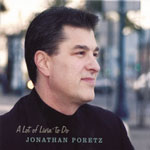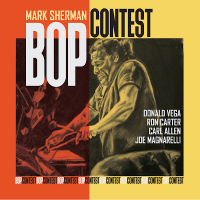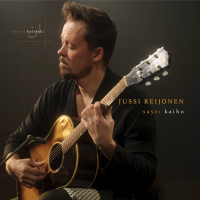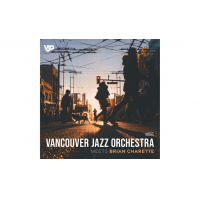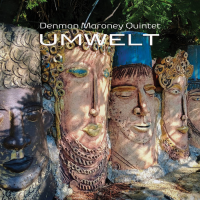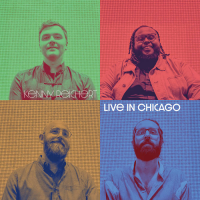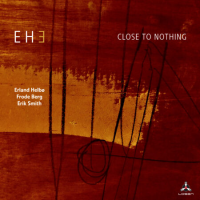Home » Jazz Articles » Multiple Reviews » Jerry Garcia: Renaissance Musician
Jerry Garcia: Renaissance Musician
 Jerry Garcia
Jerry Garcia The Very Best Of Jerry Garcia
Rhino
2006
This double disc set touches every significant point of Garcia's career apart from his work with the Grateful Dead. The uninitiated may be surprised to find that tracks such as "Sugaree and "The Wheel," staples of the latter-day Dead repertoire, came from his earliest solo work. The breadth of experimentation in the various studio works may also leave the novice taken aback. Far from the let it all hang out hippie of common (mis)perception—not to mention Dead lore—Garcia was a disciplined craftsman. He was also willing to take risks in the studio.
Superb original material like the evocative "Mission In The Rain, one of the finest Garcia-Robert Hunter collaborations in their estimable canon, resides next to widely diverse choices of cover songs. Even the most devout fan might ponder what's in common between Allen Toussaint's "I'll Take A Melody and Bob Dylan's "Knockin' On Heaven's Door, but having them juxtaposed on disc one makes the point clear: Garcia loved a good song for its own sake.
The guitarist/songwriter/singer's pinpoint precision on the frets and lovably vulnerable singing voice are both well known—as a departure point for improvisation—and the live recordings comprising the second disc of this set illustrate how astute was Garcia in choosing material that stood up on its own terms, as well as being a vehicle for the jam. The extended musical journey could take the form of traditional compositions as performed by the Jerry Garcia Acoustic Band, such as "Deep Elem Blues, some of Dylan's most emotionally volatile tunes, like "Positively Fourth Street, and, a recurring theme in the later JGB years, reggae stylings, as represented by Jimmy Cliff's "The Harder They Come.
Coming so soon after the announcement of the reorganization of Grateful Dead business structure, The Very Best Of Jerry Garcia may strike some as redundant, particularly if you own the lavish box set All Good Things and/or a wide selection of the "Pure Jerry" sets and companion anthologies like Ladder To The Stars: Garcia Sings Dylan. The single rarity here is a cover of the Beatles' "Dear Prudence," recoded by a band dubbed Reconstruction, that, like Legion of Mary, represents one of the more ephemeral units within Garcia's musicological expeditions.
The Very Best Of Jerry Garcia precisely outlines the main themes of a man as serious about making music as any individual in his generation. If the title furthers that perception, rather than the one-dimensional stereotype, it will have served an important purpose. And for the dilettante serious to rise above that level of knowledge, the set may be the ideal jumping-off point.
The first landing spot might well be the seventh issue in the "Pure Jerry" series of performances available from jerrygarcia.com. Recorded in Hampton, Virginia in 1991, this two disc set features the usual cast of JGB characters, significantly augmented by pianist Bruce Hornsby.... Jerry Garcia Band
Jerry Garcia Band
Coliseum, Hampton, VA November 9 1991
Pure Jerry
2006
Grateful Dead lore and biographical accounts of Garcia's life—contained in Dennis McNally's What A Long Strange Trip It's Been and Blair Jackson's Garcia: An American Life—make no little note of the profound influence Hornsby had on Garcia as they began to play together. Though never officially a member of the Dead, Hornsby regularly played with the group for close to three years through 1991, and effectively rekindled the unusual live chemistry of the group, particularly as it was channeled, as it had been throughout the band's career, through their lead guitarist, chief composer and singer.
The effect Hornsby has on the musicians in the Jerry Garcia Band is much the same, his effervescent playing imbuing the musicianship with a sparkling, fresh sense of rediscovery. Having peaked from the rejuvenation that followed in the wake of his brush with death in 1986, Garcia was beginning the inexorable slide into a mental and physical ennui from which Hornsby's imaginative positivism at least temporarily rescued him. Organist Melvin Seals never played anything less than the soulful foil for Garcia, but the rhythm section here, of drummer David Kemper and long-time partner bassist John Kahn, are particularly punchy on a fairly standard set of material from the JGB repertoire.
As with any band given to improvisation, however, the list of titles hardly tells the story of the performance. While there are no mammoth jams or extended segues of material a la Grateful Dead marathons, Garcia and Hornsby are mutual inspirations and ignite everyone else on stage too. The life-affirming sensation of "Run For The Roses is echoed time and time again here, literally in a bouncy cover of Van Morrison's "Bright Side Of The Road" and the piquant choice of the show-closer, " What A Wonderful "World, but also in the flexibility and nuance contained in Garcia's singing: at this stage of his life the vulnerability in his voice was augmented with a hoarse quality symbolic of the difficult times he had survived. In this performance, the vocals represent strength of experience, in keeping with an accurate image of the man as a cultural icon.
Such a legacy wouldn't matter much if the bulk of Garcia's musical enterprise did not support it, and Coliseum Hampton VA November 9, 1991 is definitely a high caliber entry into that canon. This despite its less than standard audio quality: pay attention to the disclaimer on the back cover, for it truly signals sound lacking the usual depth and clarity.
Long before he punctuates the gentle benediction of "What A Wonderful World, Hornsby's piano forays match the delicacy and precision Garcia brings to his guitar playing, especially as he unreels his imagination on Ain't No Bread In The Breadbox, "Don't Let Go and "I Second That Emotion. Hours spent mastering the banjo transpose into a filigreed instrumental language that will impress even the most jaded or sceptical listener of the man's abilities. The high-level of playing from Hornsby and Garcia in turn unifies the rest of the group: hear the common ground they find on Chuck Berry's "You Never Can Tell. Consequently, the band turn their setlist into less of a collection of individual tunes than a single piece of music.
It's testament to the strength of Jerry Garcia's own musicianly persona that, even under the duress of personal problems, he was able to forge such unique productive alliances as documented on these two packages.
Tracks and Personnel
The Very Best Of Jerry Garcia
Tracks: CD1: Studio Tracks: Deal; Bird Song; Sugaree; Loser; The Wheel; Let It Rock; Russian Lullaby; Might As Well; Mission In The Rain; I'll Take A Melody; Rubin And Cherise; Cats Under The Stars; Rhapsody In Red; Run For The Roses; Knockin' On Heaven's Door; Without Love. CD2: Live Tracks: Catfish John (1973); Deep Elem Blues (1987); Ripple (1987); Positively 4th Street (1975); The Harder They Come (1977); Gomorrah (1990); Dear Prudence (1979); Señor (Tales Of Yankee Power) (1990); Evangeline (1990); Deal (1980).
Personnel: Jerry Garcia: vocals, acoustic and electric guitar, banjo, bass, pedal steel, piano, organ, synthesizer, percussion; Bill Kreutzmann: drums; Bob Weir: guitar, vocals; Keith Godchaux: Fender Rhodes, tack piano, keyboards; Phil Lesh: bass; Mickey Hart: drums, percussion, fire extinguisher; Donna Jean Godchaux: vocals; Merl Saunders: organ; David Kemper: drums; Arthur Adams: guitar; Michael Omartian: piano, tack piano; John Kahn: bass, acoustic bass, organ, synthesizer, vibes; Ron Tutt: drums; Bobbye Hall: congas, shakers, bells; Amos Garrett: trombone; Joel Tepp: clarinet; Richard Greene: violin; Nicky Hopkins: piano; Larry Knechtel: Fender Rhodes; Jimmy Warren: piano, clavinet; Melvin Seals: organ; Gloria Jones, Jackie LaBranch, Julie Stires & Liz Stafford: vocals; Roger Neuman: trumpet; David Grisman: mandolin, vocals; Peter Rowan: guitar, vocals; David Nelson: guitar, vocals; Sandy Rothman: mandolin, vocals; Vassar Clements: fiddle, Kenny Kosek: fiddle; Gaylod Birch: drums; Ed Neumeister: trombone; Ron Stallings, Ozzie Ahlers: keyboards; Johnny D'Fonseca: drums.
Jerry Garcia Band: Coliseum, Hampton, VA November 9, 1991
Tracks: CD1: How Sweet It Is; He Ain't Give You None; You Never Can Tell (C'est La Vie); Run For The Roses; The Night They Drove Old Dixie Down; I Second That Emotion; My Sisters And My Brothers; Ain't No Bread In The Breadbox. CD2: Bright Side Of The Road; Shining Star; Waiting For A Miracle; Think; I Shall Be Released; Don't Let Go; Midnight Moonlight; What A Wonderful World.
Personnel: Jerry Garcia: guitar, vocals; Gloria Jones: vocals; John Kahn: bass; David Kemper: drums; Melvin Seals: organ; Bruce Hornsby: Fender Rhodes.
Visit Jerry Garcia on the web
Tags
PREVIOUS / NEXT
Support All About Jazz
 All About Jazz has been a pillar of jazz since 1995, championing it as an art form and, more importantly, supporting the musicians who make it. Our enduring commitment has made "AAJ" one of the most culturally important websites of its kind, read by hundreds of thousands of fans, musicians and industry figures every month.
All About Jazz has been a pillar of jazz since 1995, championing it as an art form and, more importantly, supporting the musicians who make it. Our enduring commitment has made "AAJ" one of the most culturally important websites of its kind, read by hundreds of thousands of fans, musicians and industry figures every month.



